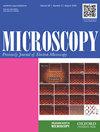Application of machine learning techniques to electron microscopic/spectroscopic image data analysis
IF 1.8
4区 工程技术
引用次数: 24
Abstract
The combination of scanning transmission electron microscopy (STEM) with analytical instruments has become one of the most indispensable analytical tools in materials science. A set of microscopic image/spectral intensities collected from many sampling points in a region of interest, in which multiple physical/chemical components may be spatially and spectrally entangled, could be expected to be a rich source of information about a material. To unfold such an entangled image comprising information and spectral features into its individual pure components would necessitate the use of statistical treatment based on informatics and statistics. These computer-aided schemes or techniques are referred to as multivariate curve resolution, blind source separation or hyperspectral image analysis, depending on their application fields, and are classified as a subset of machine learning. In this review, we introduce non-negative matrix factorization, one of these unfolding techniques, to solve a wide variety of problems associated with the analysis of materials, particularly those related to STEM, electron energy-loss spectroscopy and energy-dispersive X-ray spectroscopy. This review, which commences with the description of the basic concept, the advantages and drawbacks of the technique, presents several additional strategies to overcome existing problems and their extensions to more general tensor decomposition schemes for further flexible applications are described.机器学习技术在电子显微镜/光谱图像数据分析中的应用
扫描透射电子显微镜(STEM)与分析仪器的结合已成为材料科学中最不可或缺的分析工具之一。从感兴趣区域的许多采样点收集的一组微观图像/光谱强度,其中多个物理/化学成分可能在空间和光谱上纠缠,可以期望成为关于材料的丰富信息来源。为了将这样一个包含信息和光谱特征的纠缠图像展开为其单独的纯成分,需要使用基于信息学和统计学的统计处理。这些计算机辅助方案或技术根据其应用领域被称为多变量曲线分辨率、盲源分离或高光谱图像分析,并被归类为机器学习的一个子集。在这篇综述中,我们介绍了非负矩阵分解,其中一种展开技术,以解决与材料分析相关的各种问题,特别是与STEM,电子能量损失谱和能量色散x射线谱有关的问题。本文首先介绍了该技术的基本概念、优点和缺点,并提出了一些克服现有问题的额外策略,并描述了它们对更一般的张量分解方案的扩展,以进一步灵活应用。
本文章由计算机程序翻译,如有差异,请以英文原文为准。
求助全文
约1分钟内获得全文
求助全文
来源期刊

Microscopy
工程技术-显微镜技术
自引率
11.10%
发文量
0
审稿时长
>12 weeks
期刊介绍:
Microscopy, previously Journal of Electron Microscopy, promotes research combined with any type of microscopy techniques, applied in life and material sciences. Microscopy is the official journal of the Japanese Society of Microscopy.
 求助内容:
求助内容: 应助结果提醒方式:
应助结果提醒方式:


